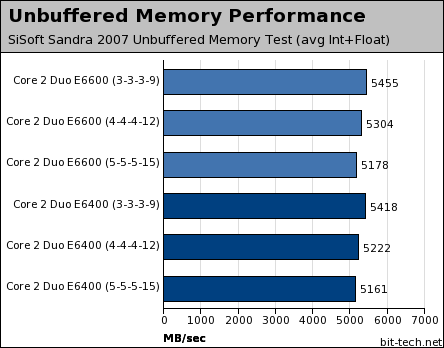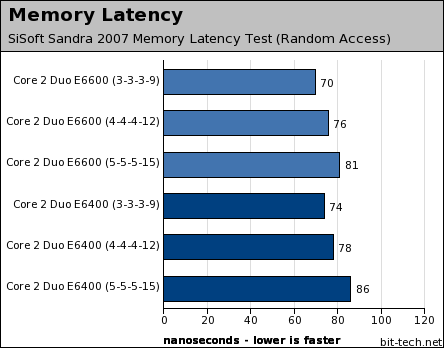Core 2 Duo: Effects Of Memory Timings
July 18, 2006 | 16:18

Sisoft Sandra Memory Bandwidth & Latency:
Before we get on to our real-world benchmarking suite, we've run a couple of synthetic benchmarks to show the theoretical performance benefits of using tighter memory timings. The first thing we looked at was Sisoft Sandra 2007 memory performance - we used the Unbuffered Memory and Memory Latency tests to gauge theoretical memory performance.

SuperPI Mod 1.5:
SuperPI Mod 1.5 is a popular benchmark among enthusiasts and the results are affected by memory bandwidth. You can download a copy of the application from XtremeSystems.org.
On the other hand, the improvements between the same two memory settings was a mere half second on the Core 2 Duo E6600. This indicates that the Core 2 Duo E6600 doesn't suffer quite so much when tightening memory timings. That makes sense, considering that the E6600 utilises the larger 4MB L2 cache. Lets see if the same is true when using real applications.

MSI MPG Velox 100R Chassis Review
October 14 2021 | 15:04








Want to comment? Please log in.